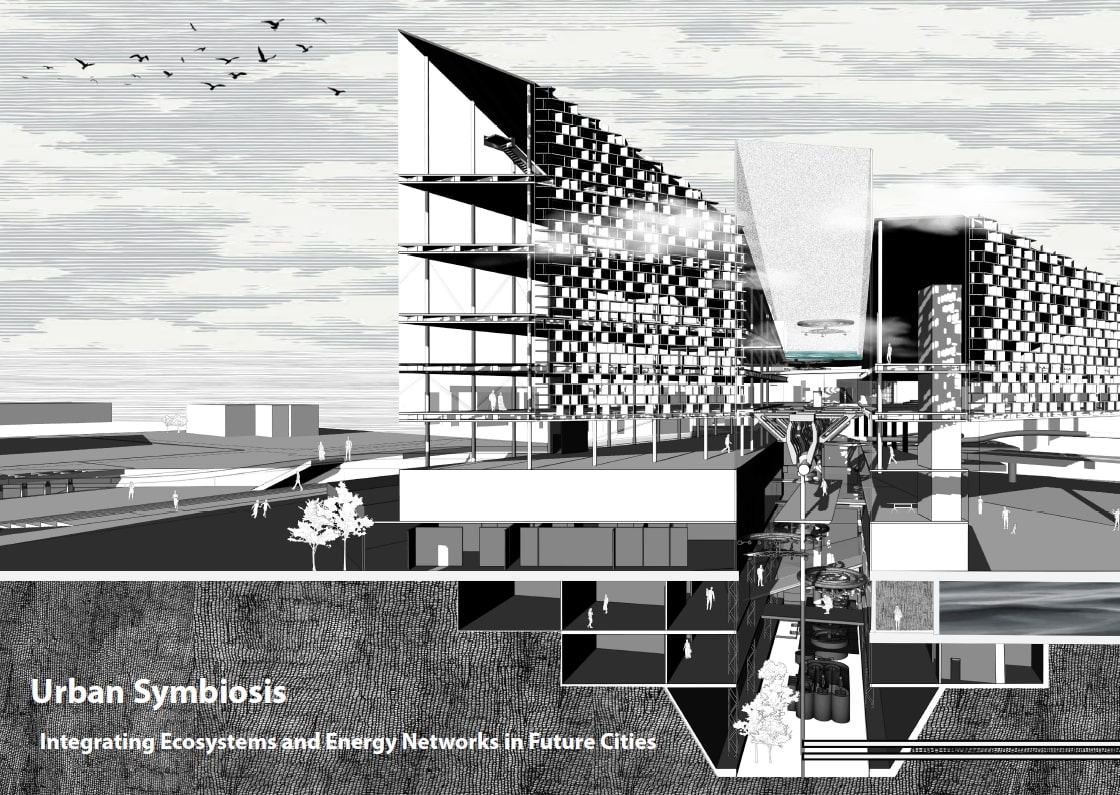
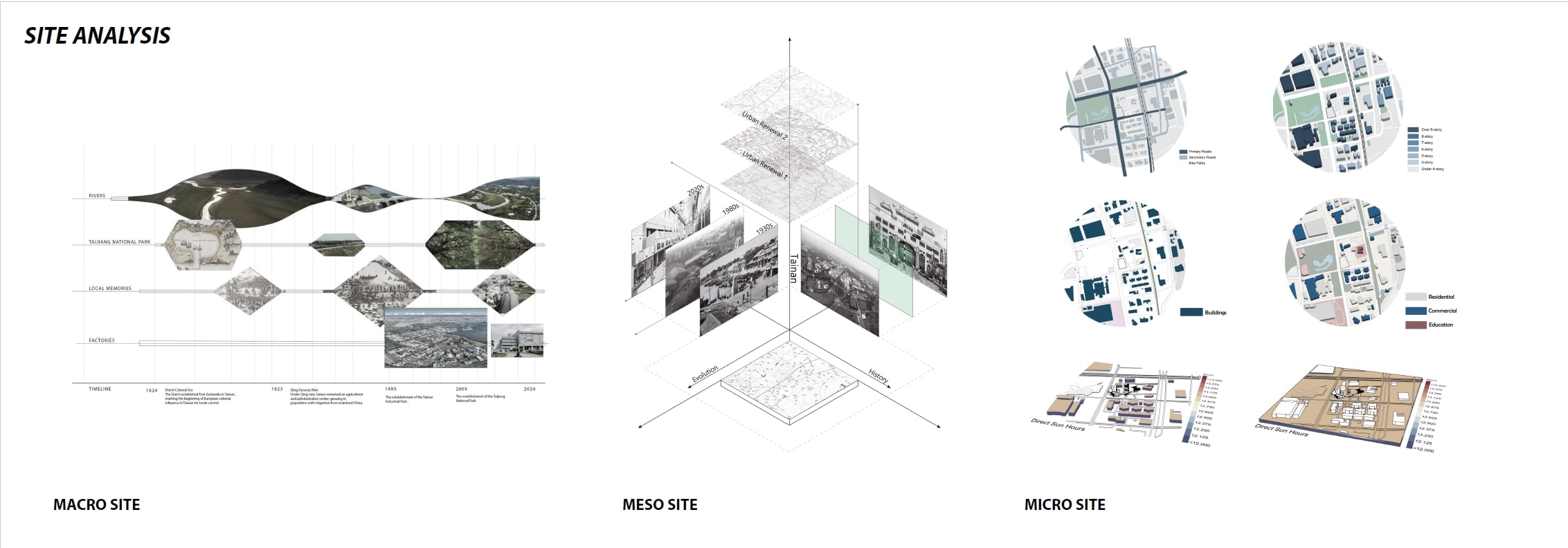
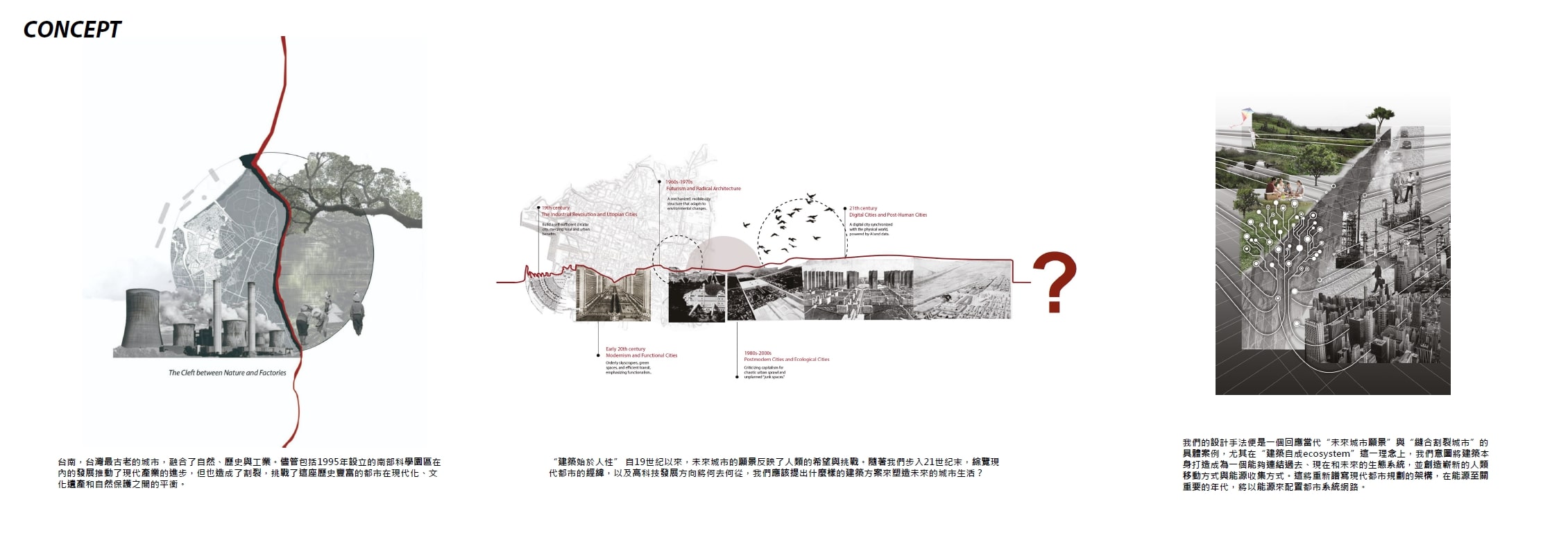
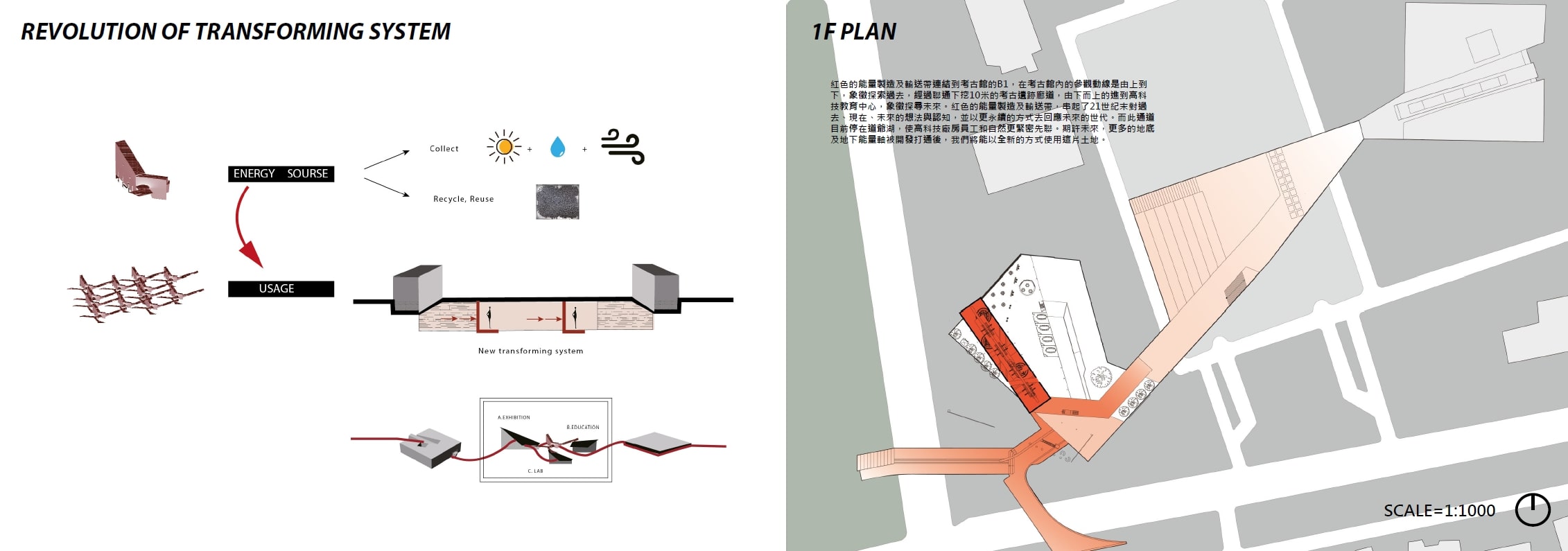

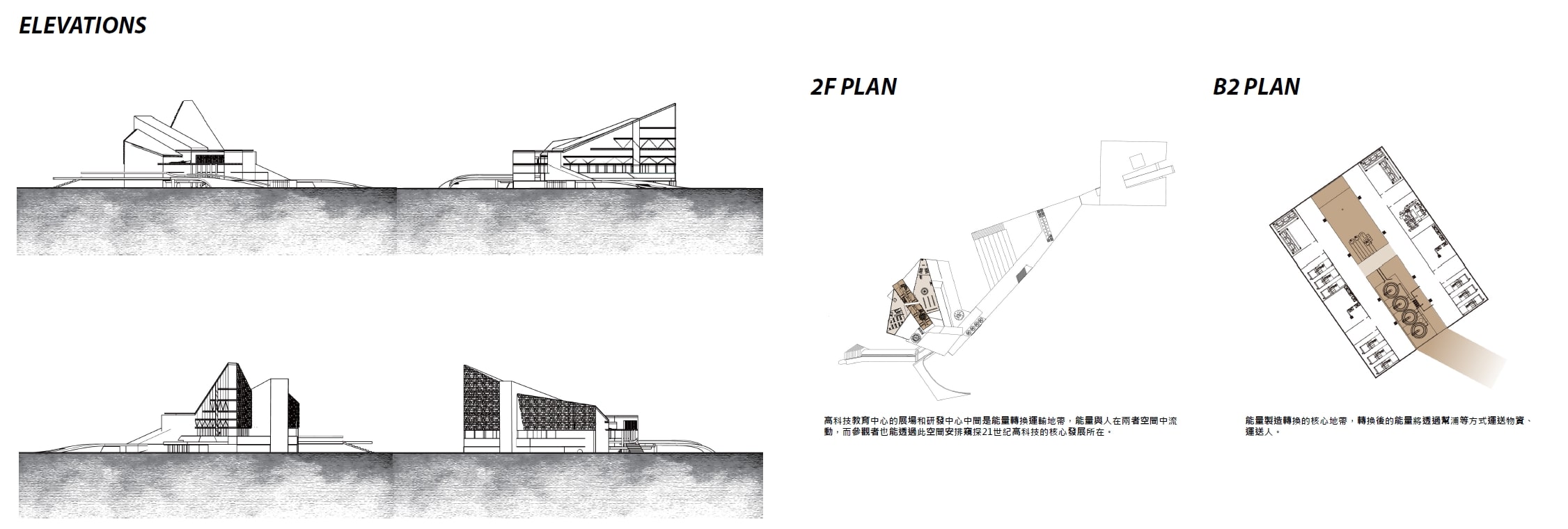
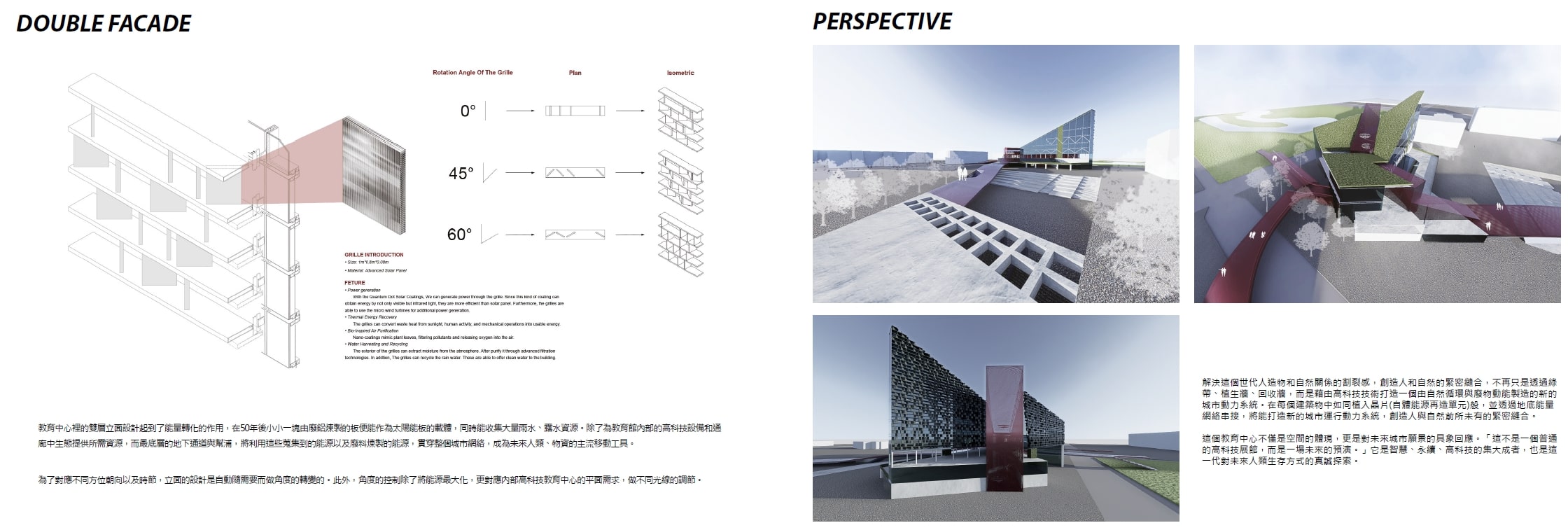
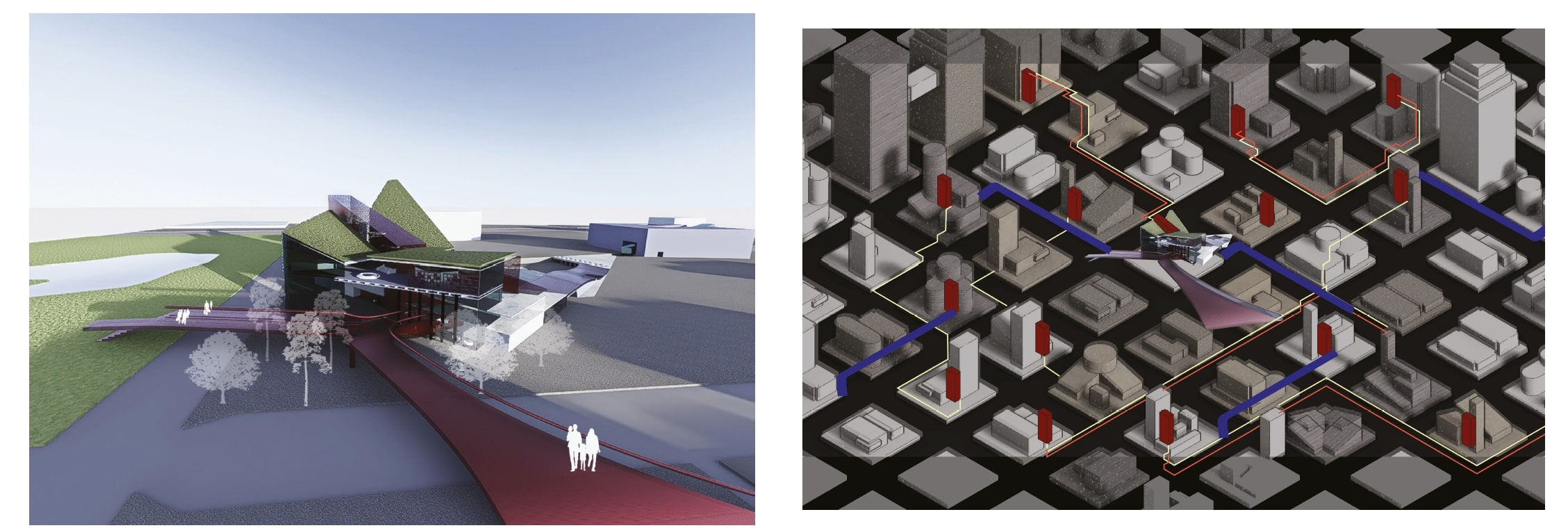
本設計理念源自對未來城市願景的探索與回應,旨在創造一種全新的都市形態,讓建築不再僅僅是靜止的空間,而成為一個自我維持的生態系統,連結過去、現在與未來。以台南這座融合自然、歷史與工商業的古城為背景,我們針對現代化進程中出現的空間割裂和生態脫節問題提出創新解決方案。台南自古受多元文化影響,但隨著南部科學工業園區等現代建設的推動,城市在促進產業進步的同時,也逐漸失去了整體性,呈現出現代與傳統、工業與自然之間的斷裂。
在此背景下,我們以高科技教育中心作為示範原型,提出「建築自成生態系統」的理念。教育中心內的雙層立面設計不僅具備能量轉化功能,利用廢鋁製成的小型板塊承載太陽能電力,還能有效收集雨水與露水,為館內高科技設備及生態通廊提供所需資源。同時,最底層的地下通道與幫浦系統將整合這些能源,貫穿整個城市網絡,形成一條無需依賴傳統交通工具即可實現人、物資及動能傳輸的新型移動系統。
此外,我們的設計針對當代「無信仰」的現象,提出以效能建立信任的新模式。透過自給自足的生態系統,每一座建築都成為能量與資源的節點,有效彌補都市發展中的信任斷層,促進現代與傳統、科技與自然之間的融合。這不僅讓城市重新找回整體連結,也為未來都市規劃提供了一個具體而可行的藍圖。
綜上所述,本設計以高科技教育中心為前瞻示範,推動一種全新的城市生態模式,將建築打造成連結歷史、自然與未來技術的核心樞紐,重新定義人類的移動方式與能源配置,並引領我們邁向一個智慧、永續且韌性的未來城市。
Our design responds to future urban visions by redefining architecture as a self-sustaining ecosystem that seamlessly integrates energy production, mobility, and ecological balance. Set in Tainan, Taiwan’s oldest city, our project addresses the fragmentation caused by modernization, where historical, natural, and industrial elements have become disconnected due to rapid urban development, particularly following the establishment of the Southern Taiwan Science Park in 1995. This division highlights the urgent need for a new urban framework that reconnects the city’s cultural and environmental heritage with its future growth.
Using a high-tech education center as a prototype, we introduce the concept of "architecture as an ecosystem," where buildings act as independent energy and resource hubs. The double-skin facade plays a key role in energy transformation, utilizing recycled aluminum panels to harvest solar energy while also collecting rainwater and dew. These resources sustain the center’s high-tech facilities and ecological corridors. Additionally, an underground tunnel and pump system distribute collected energy and materials across the city, creating a decentralized, self-sustaining infrastructure that reduces reliance on traditional transportation methods.
Beyond physical functionality, our design also challenges the contemporary condition of "faithlessness" by proposing a new system of trust based on measurable, self-sufficient performance. By embedding energy-producing and resource-circulating systems within buildings, we replace dependence on external utilities with a network of self-reliant urban nodes. This approach strengthens the connection between architecture and its surroundings, fostering a cityscape where nature, technology, and human activity exist in harmony.
Ultimately, this project envisions a new urban paradigm where cities evolve as interconnected, self-sustaining ecosystems. By transforming architecture into a dynamic and adaptive force, we offer a blueprint for a future where energy distribution, mobility, and sustainability are integrated into the very fabric of the built environment, ensuring a resilient, intelligent, and enduring city for generations to come.